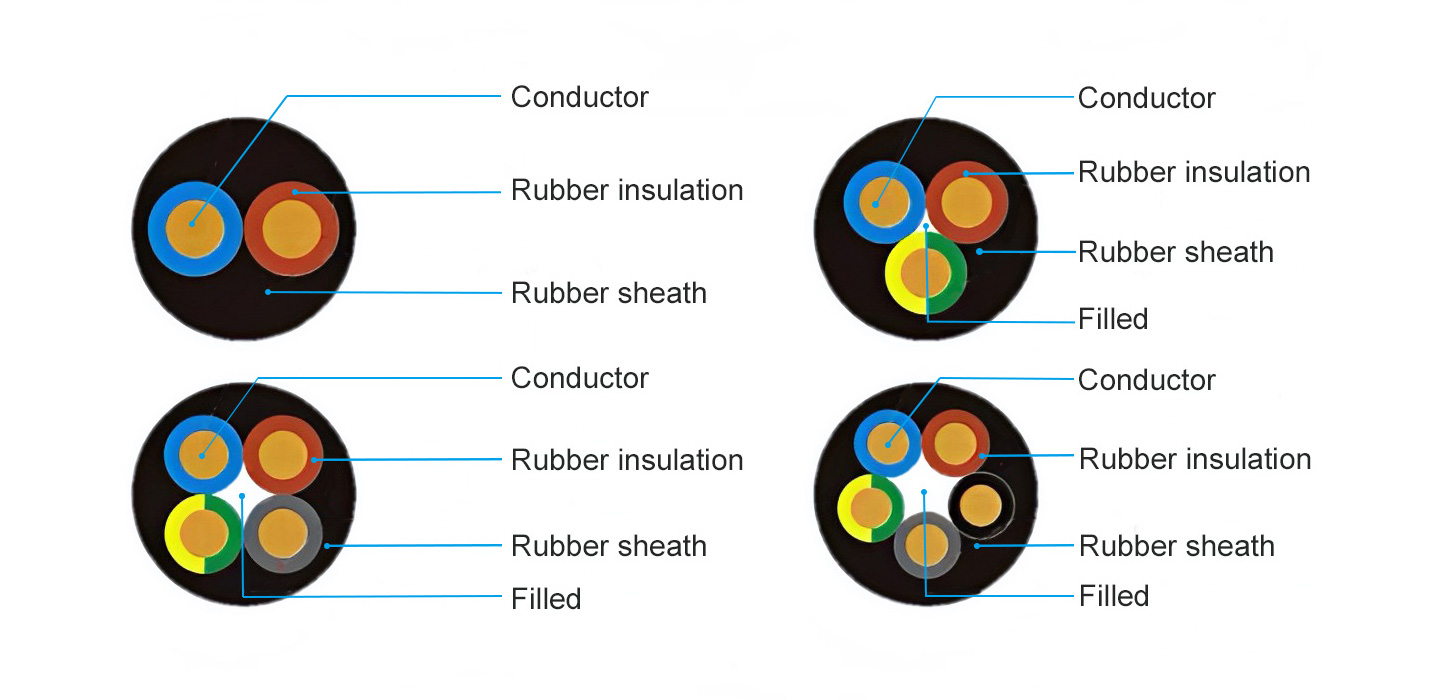The size stated for cables is given in mm2 and this measurement is the cross sectional area (CSA) of the wire inside. The larger that area, the higher the current it can carry. If a cable is used which is too small for the amount of current passing through, it becomes dangerous. This results in the wire overheating and causing a serious safety risk.
While many electrical contractors and installers will have adequate or good knowledge of the subject, it is clear that there are many that do not. This comes from the extraordinarily high interest shown in a recent Voltimum UK 'VoltiNEWS' e-newsletter that featured Draka's cable sizing tool (of which more later in this VoltiBULLETIN). There have also been a significant number of questions on cable sizing from Voltimum UK users to our panel of experts, and these have made it very clear that more knowledge is required. Solar Panel Cable

To learn more about the requirements for cable sizing, go to Appendix 4 (p252 in my copy) of the 17th Edition of the IEE Wiring Regulations (BS 7671:2008). This starts by saying: 'Having established the design current of the circuit under consideration, the appropriate procedure described in paragraphs 5.1 and 5.2 below (in Appendix 4) will enable the designer to determine the size of cable it will be necessary to use.'
Appendix 4 then goes on to list the variables that need to be taken into account, such as the length of the cable run, the permissible voltage drop for the equipment being supplied, normal v overload and rating factors (such as ambient temperature, any cable grouping and thermal insulation). The characteristics of the protective device must also be taken into account and, so may soil thermal resistivity for cables buried in the ground in and around buildings.
Where cables are grouped, the following are important factors: cables bunched in air; on a surface, embedded or enclosed (see the Adaptaflex article in this VoltiBULLETIN - entitled: 'Flexible conduit cable carrying capacity (wire fill)').
Appendix 4 in the 17th Edition provides all requirements, and provides a method of calculating cable size, as well as making reference to voltage drop tables, but note that cable sizing may also comply with IEC 60364:2001.
However, it's not all plain sailing, partly because of the number of variables that do have to be taken into account, so - to make things much easier of electrical contractors and installers who may have to be involved in cable sizing, various organisations provide cable sizing calculators, some free on-line, others part of electrical design/estimating software. Draka, already mentioned, is one company that has provided a cable sizing calculator on its website. This can be accessed around the clock by registering free at www.drakauk.com. Identifying the precise cable specification takes a matter of seconds using this online calculator, which is based upon BS 7671:2008.
Groups of cables on trays or in trunking:
Where cables are grouped on trays or in trunking or conduit, consideration must be given to how they are grouped - for example, does the group comprise different sizes of sheathed or non-sheathed cables? The mix and total number of cables are also important considerations. For example, some of the following cable types could be grouped (this shows type(s) against conductor temperature):
The mix is important, because, for example, overloading could occur in one group of smaller-sized cables but not in the larger ones. Such factors, says Appendix 4, 'cannot be tabulated but must be calculated for each group, but the method of calculation is outside the scope of Appendix 4.
Cable sizing is one matter, but there are also requirements in terms of cable carrying capacities (and more) for conduit, including flexible conduit, as Adaptaflex explains in another article in this VoltiBULLETIN, entitled 'Flexible conduit cable carrying capacity (wire fill)'.
It is very important to note, when using cable sizing calculators that recommended cable sizes are based upon information provided by the installer or user and are intended only as a guide. For example, calculation might be derived from BS7671:2008 Installation method C (Clipped Direct), for cable types BS5467 and BS6724 - with the voltage drop taken to be 230 - 400V. However, there are other 'Installation Methods' and other cable types that may be used, so it is always the installer's/user's responsibility to ensure that all data and assumptions are correct. Also, all cable used must be suitable for its intended purpose.
If you want to leave your comment, please register or log in.
Product tests and other information of over 20 partners in the industry.

Mc4 Extension Cable And here's some amazing content. It's very engaging. right?